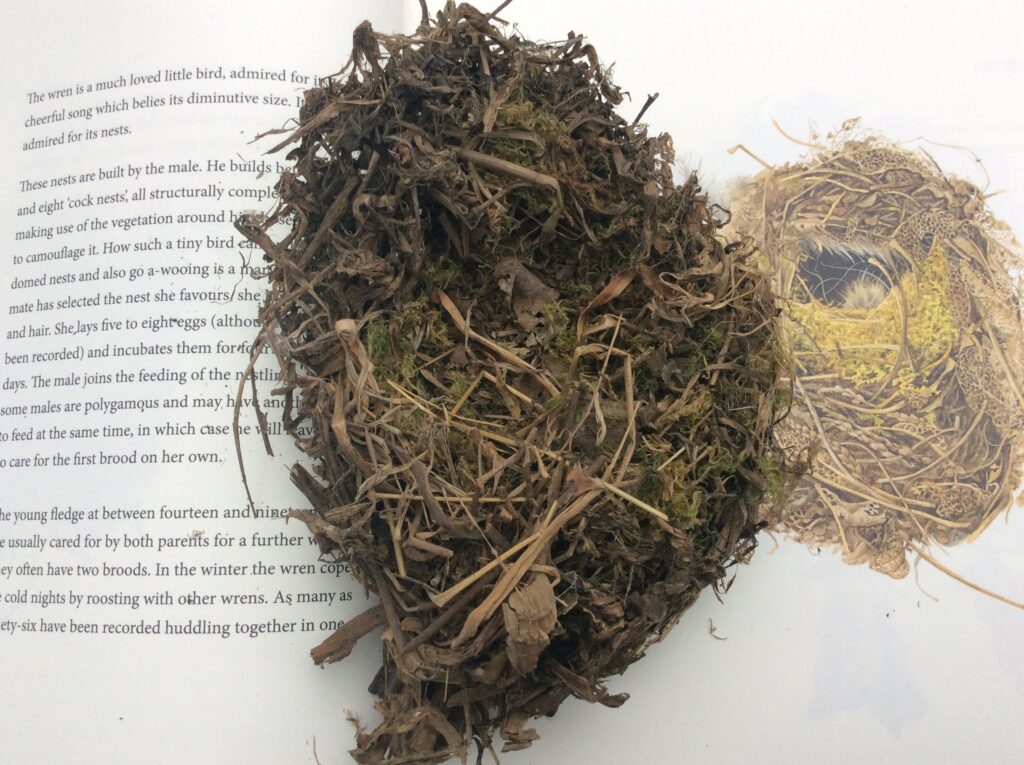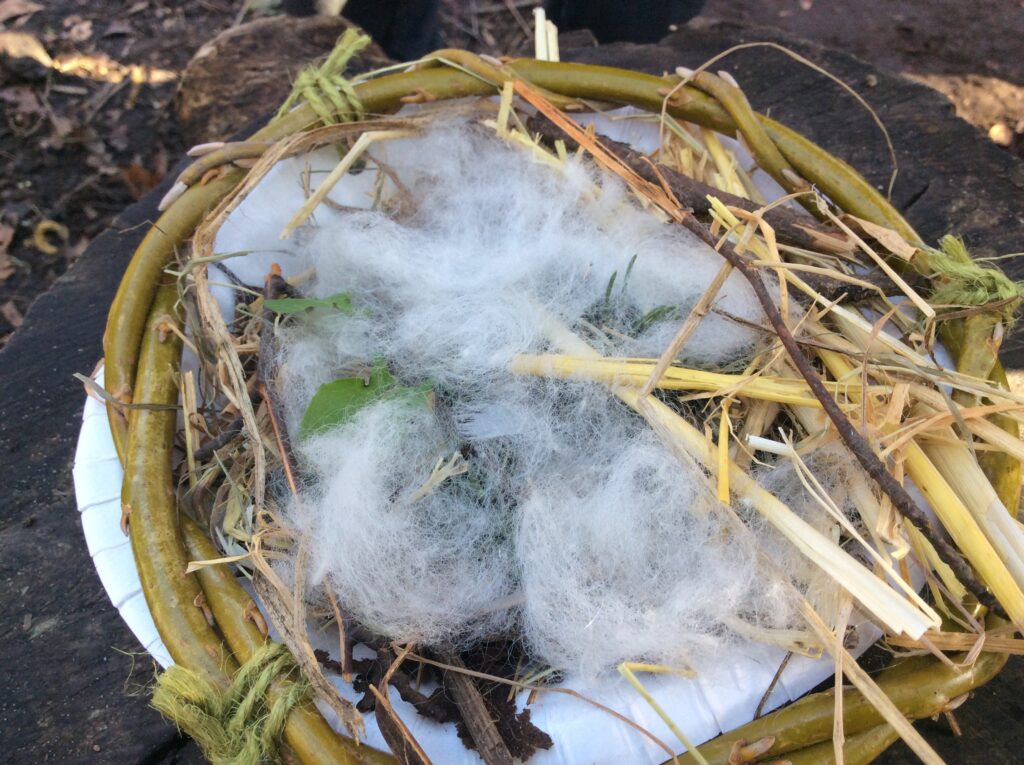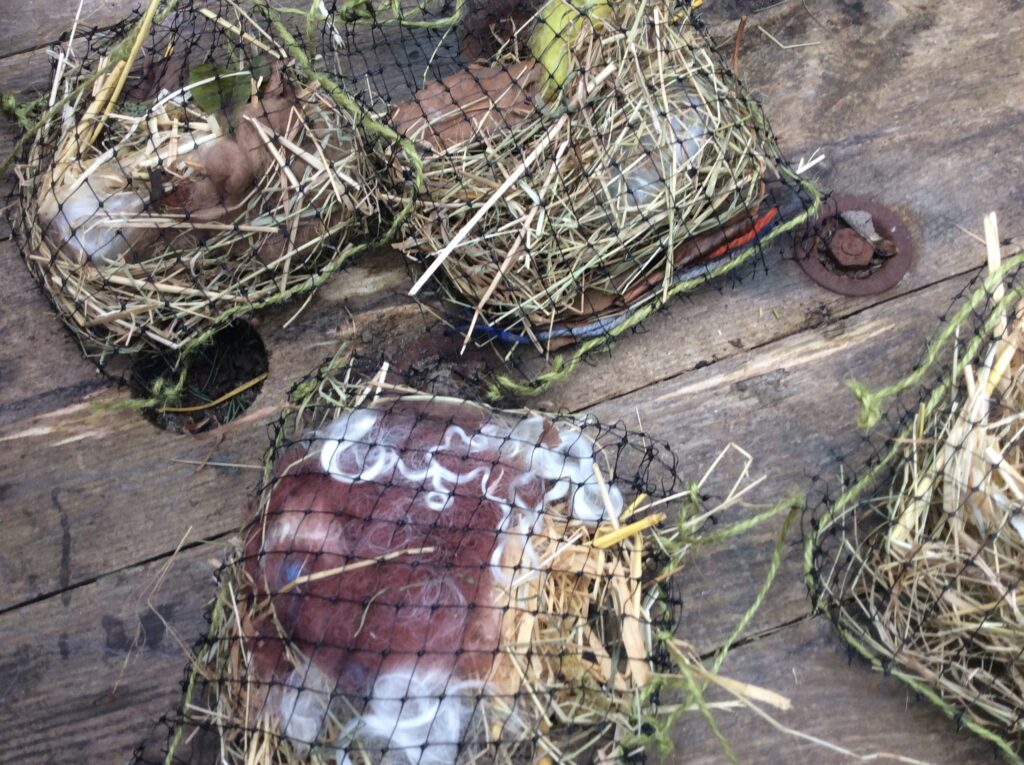
A bird’s nest is a marvel to behold. If you’ve been lucky, you might have found an old nest on the ground that’s been blown out of a tree after winter storms. I find it fascinating that this once hidden treasure can help revel the secrets of its creation and design. A nest can be described as a functionally shaped structure in which a bird lays and incubates its eggs and holds their growing brood until they are safely fledged. However, nests vary hugely in their construction with each bird species, depending on its habitat, the needs of its young and availability of materials. Birds are ingenious and by studying their nests you can glimpse and begin to appreciate this important and busy time in a bird’s life.
Remember it’s illegal to disturb nesting birds, so only collect and study nests that are obviously old and abandoned – ideally during the winter.
Tip: Old nests are fragile, so I put them in small shoe boxes for groups to view. It also avoids having to wash hands afterwards – nests are full of bird mites.
I have small collection of windblown nests and a wren’s nest that I found during the autumn when cutting back bullrushes in a pond. This gives my groups the opportunity to look closely and wonder at the variety of nest designs. Can they recognise and name the materials that have been used? Moss, lichen, feathers, sheep wool, horsehair, dried grass – and how these materials are often built into layers to construct the nest. The main framework is the strongest, with an inner central cup of soft, insulating materials, whilst on the outside camouflage may be added to help keep the nest safe from predators.
Most birds will build new nests each spring and young children are often surprised to learn that birds don’t sleep in their nests after the nesting season. After looking up close at a selection of old nests, I invite my groups to choose a bird species and think about where that bird would build their nest. Corvids such as crows and rooks will nest together at the top of tall trees, whilst Jackdaws prefer gaps in old stone walls and buildings. Songbirds nest within the safety of hedgerows, protected by thorny shrubs such as hawthorn, or low down to the ground amongst bramble thickets or stone walls – a favourite for the robin and wren. Don’t forget of course, that there are ground nesting birds. In the New Forest there are lapwing, curlew and nightjar to name just a few.

Build a bird’s nest. This is a fun activity with Primary aged children. I provide a paper bowl with a willow hoop attached to provide the shape and rigidity for a simple bowl shaped nest. Groups are then challenged to collect natural materials to build up the different layers of a nest. I bring in additional materials, so areas are not overused and damaged by foraging groups, and I don’t allow them to pick anything growing – especially in early spring. Provide some sheep or alpaca wool – children enjoy teasing the materials apart to make them fluffier and more insulating. Finally with the addition of a soft toy bird, groups then have to choose the most appropriate place for their nest. You can extend this activity by asking groups to model bird eggs using clay – invite a discussion about shape, size, patterns and numbers of eggs laid by different bird species. Lots of questioning!

Make nesting material bags: Simply tie small bundles of wool and dried grass together and hang up from a low tree branch or hedgerow. With my Nature Club groups we have been sewing together folded squares of garden netting using twine and then stuffing these with different nesting materials – sheep and alpaca wool, hay / dried grass, straw and short pieces of different coloured wool. If you find an abandoned nest nearby next winter, take a close look as the bird might have incorporated some of your coloured wool in its design – then you’ll know that the nesting bird had been gathering material from your garden.
Sometimes you can watch closely to see which direction a bird flies with your nesting material, and locate where building its nest. Remember never to get too close to disturb a nesting bird. Observe safely from a distance.
A helping hand: Finally, don’t forget to clean out any artificial wooden nest boxes. Birds like to rebuild their nests using new materials to reduce the build-up of parasites which can harm growing chicks. Celebrated from February 14th each year is National bird box week, so why not buy or build some more nesting boxes. Go to https://www.nestboxweek.com/ for tips, designs and building instructions. Its not too late to get started!
An excellent book that I use with groups is ‘Nests’ by Susan Ogilvy’ – full size, accurate paintings of bird nests that she has found or been given by friends. You don’t need your own collection of old nests to get going – enjoy!
